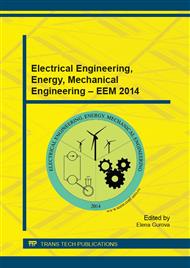p.305
p.312
p.316
p.321
p.326
p.333
p.339
p.345
p.351
Influence of Smelting Technology on Properties of Soft Magnetic Fe-B-Si Alloys
Abstract:
The quality of metal production can be different even at identical elemental composition and similar heat treatment. The thermo-time smelting regime influences on structure of a metal melt. The structure of a melt influences on process of a hardening and quality of solid alloy. The thermo-time processing of a melt is very relevant at production of nanocristaline materials. The structure of amorphous ribbon is inherited from a melt. The long-lived relaxation processes can be exist in liquid state. They can lasts units or even tens hours. The thermo-time processing allows to receive an equilibrium melt. The properties of an equilibrium melt depend only on an elemental composition and temperature. The development of thermo-time processing is possible on the basis of analysis of different structural-sensing properties of melts. The thermo-time processing is a combination of heating temperatures and temporary ranges. But more often it is possible to determine temperature at which one a melt passes to an equilibrium state practically instantly. Such temperature is named “critical temperature”. The achievement of “critical temperature” is accompanied by anomalies on relations of properties to temperature. The quality of soft magnetic materials received from melt heated up above than “critical temperature” is higher.
Info:
Periodical:
Pages:
326-332
Citation:
Online since:
December 2014
Authors:
Price:
Сopyright:
© 2015 Trans Tech Publications Ltd. All Rights Reserved
Share:
Citation:


